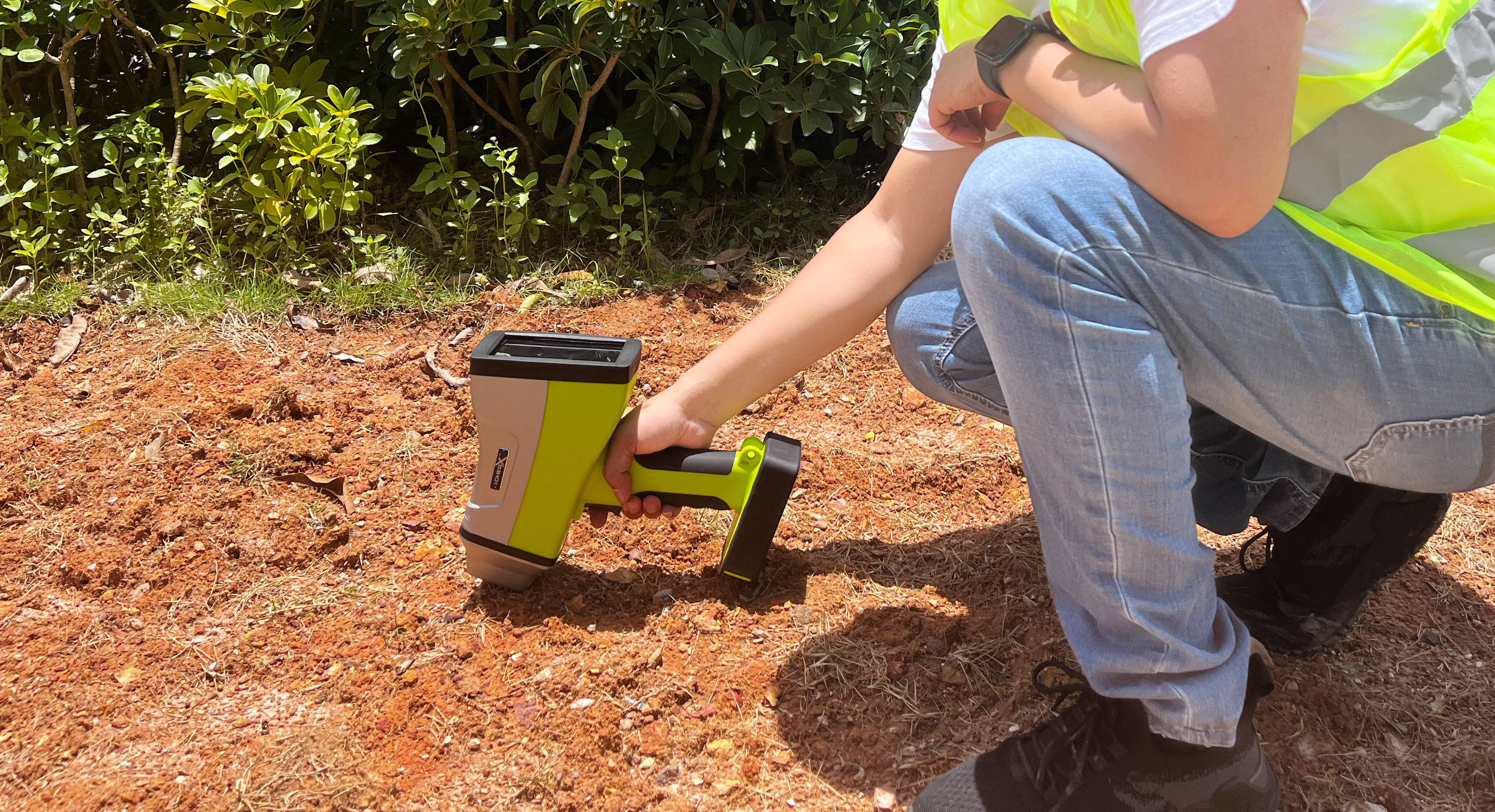Home > Company News > Which are the important aspects of XRF spectrometers in environmental protection detection?
Company News

I. Detection of Heavy Metal Pollution in Soil Soil pollution is one of the major environmental problems faced globally, among which heavy metal pollution is particularly prominent. Heavy metal pollution has strong biotoxicity and can cause serious harm to the health of animals, plants and humans. XRF spectrometers play an important role in the detection of heavy metals in soil. Case of heavy metal pollution detection in soil in the Dexing mining area, Jiangxi Province In a large-scale soil environmental investigation and heavy metal pollution assessment carried out in the large mining area of Dexing, Jiangxi Province, the research team collected 919 soil samples and used an X-ray fluorescence spectrometer (XRF). The mining activities here are frequent, and waste water and residue are likely to cause heavy metal pollution in the surrounding soil. The XRF spectrometer can quickly detect various possible heavy metal elements such as lead, cadmium, mercury and arsenic in the soil, and then determine the degree and scope of soil pollution. Through this detection, it can be determined which areas need key treatment and provide accurate data support for the subsequent soil remediation work, so as to formulate reasonable treatment measures such as using phytoremediation, chemical remediation and other means. The role of portable XRF in soil pollution investigation Portable XRF has obvious advantages in soil pollution investigation. Traditional heavy metal detection methods such as atomic absorption spectrometry and inductively coupled plasma method, although with high sensitivity, have high cost and long analysis time, and have great limitations for the detection of large sample quantities. The portable XRF is simple to operate, fast and can perform in-situ measurement. For example, in the investigation of a contaminated area of a certain farmland, the portable XRF can quickly detect the heavy metal content in the soil at different sampling points on site without sending the samples back to the laboratory for a long detection cycle. It basically does not require sample pretreatment, the detection time is very short, the instrument is simple and easy to maintain, and does not consume reagents. Compared with laboratory analysis, on-site analysis reduces the processes such as sample handling, transportation and corresponding complicated records, greatly reducing the test cost of a single sample. This makes it widely used in large-scale soil pollution investigation work and provides the possibility to grasp the current situation of soil pollution in time. II. Analysis of Heavy Metal Pollution in Water Quality Detection of industrial wastewater pollution The wastewater discharged by many industrial productions such as metal mining and metallurgy, electroplating and other enterprises contains a large amount of heavy metals. Suppose in a case of water body detection around the wastewater discharge outlet of an electroplating plant, there may be heavy metal pollutants such as chromium, copper and zinc in the wastewater of this electroplating plant. The XRF spectrometer can analyze and detect the collected water samples. It determines the content of these heavy metals by irradiating the metal ions in the water sample to excite characteristic X-rays. Through regular detection, it can monitor whether the wastewater treatment of the electroplating plant meets the standard. If it exceeds the standard, the treatment process can be adjusted in time to prevent the polluted water from flowing into the surrounding natural water bodies such as rivers and lakes, avoiding damage to the ecological environment of the water body and protecting the living environment of aquatic organisms from the threat of heavy metal pollution. Monitoring of the polluted water area environment For the already polluted river or lake area, the XRF spectrometer is also helpful to grasp the water pollution situation. For example, if a certain river is polluted by the upstream industry, by using the XRF spectrometer to detect the heavy metal content in the water samples at different river sections, the diffusion and dilution of heavy metals in the river can be understood. If the heavy metal content in a certain section of the river is detected to exceed the standard, the pollution source can be traced back and combined with other technical means (such as hydrological models, trace tracking, etc.) to further determine the transmission path of the pollution and provide reliable data for the pollution control of the river basin. III. Solid Waste Analysis and Atmospheric Particulate Matter Monitoring Analysis of harmful elements in solid waste In the management of solid waste, qualitative and quantitative analysis of harmful elements by XRF spectrometer is crucial. For example, in an electronic waste treatment plant, waste electronic devices contain heavy metals such as lead, mercury, cadmium and chromium. Before disassembling and treating electronic waste, the XRF spectrometer can be used to analyze the heavy metal components and contents. This helps to formulate a reasonable disposal plan. For example, for components containing more heavy metals, special recovery or treatment processes can be adopted to reduce the harm of these harmful elements to the environment during subsequent landfill, incineration and other treatment processes. In addition, for the waste residue of some municipal landfill sites, the XRF spectrometer can also be used to detect the risk of possible heavy metal leaching, etc. Monitoring of atmospheric particulate matter In the study of air pollution, the XRF spectrometer can also be used to analyze the metal components in atmospheric particulate matter. Taking a heavy industrial city as an example, at its atmospheric environmental monitoring station. By collecting samples of atmospheric particulate matter (such as PM2.5 and PM10) and detecting them with an XRF spectrometer, metal components such as iron, copper and zinc can be identified. The sources of these metal components may be coal combustion emissions, industrial waste gas emissions or vehicle exhaust emissions, etc. Through long-term monitoring and data analysis, the source and composition rules of air pollution can be understood, providing a scientific basis for formulating measures for air pollution control such as urban air emission reduction policies.
Popular Searches
- Carbon Analyzers
- sulfur analyzer
- element analyzer
- infrared carbon sulfur analyzer
- Carbon Sulfur Analyzer
- Total Organic Carbon Analyzer
- Carbon Sulphur Analyzer
- Silicone Analyzer
- Carbon Silicone Analyzer
- Metal Analyzer
- bet surface area analyzer
- food safety testing equipment
- food safety tester
- fat analyzer
- carbon analyzer
- diffraction



